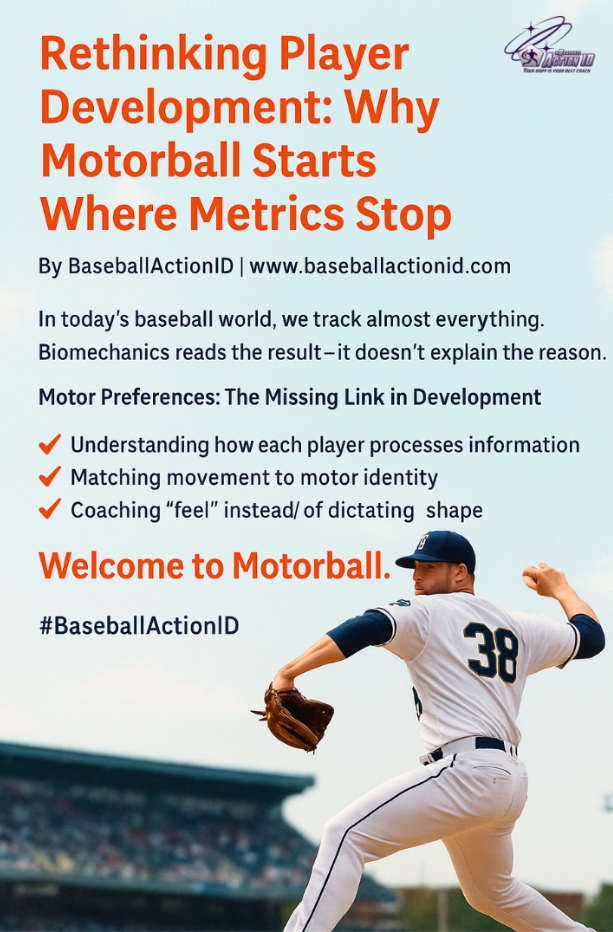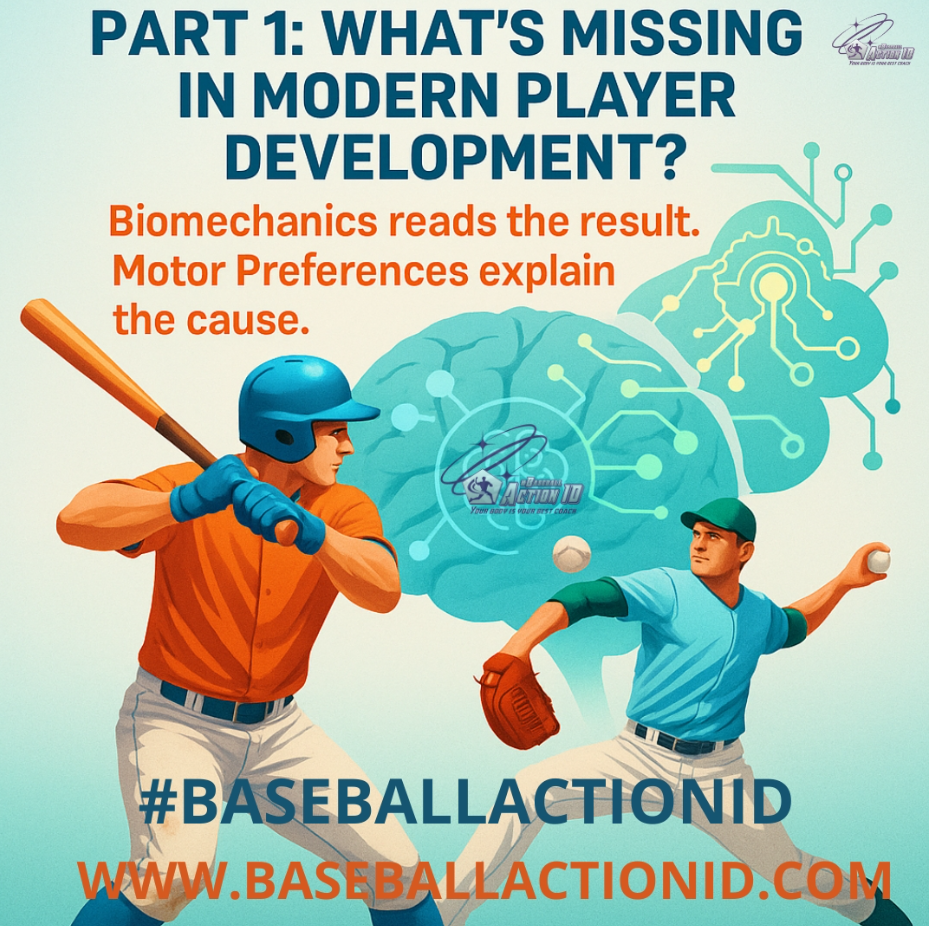Rethinking Player Development: Why Motorball Starts Where Metrics Stop

In today’s baseball world, we track almost everything.
Biomechanical breakdowns. Kinematic sequences. Ground force production. Release points. Spin efficiency. Movement profiles. From the outside, it looks like we’ve never known more about what athletes do.
But for all our tools, tech, and data… one crucial question remains:
Are we actually developing the right things?
The Problem Beneath the Precision
Modern Player Development is largely built around what we can measure — mechanics, metrics, and repeatable outputs. We take video, analyse the delivery, tweak the angles, overlay movement charts, and apply standardised drills to move the athlete closer to “the model.”
But what if the model is the problem?
Biomechanics reads the result —
It doesn’t explain the reason.
When a pitcher’s delivery breaks down under pressure, or a hitter’s swing “feels off,” we often assume it’s a mechanical failure. But what if it’s not? What if it’s a mismatch between how we ask them to move… and how they’re designed to move?
Motor Preferences: The Missing Link in Development
Every athlete has a neuro-motor identity — a natural blueprint that governs how they:
- Generate force
- Process timing
- Navigate space
- React under stress
- Interpret feedback
- Learn and adapt
This blueprint is not visible in a video breakdown. It doesn’t show up in a 3D report. It’s embedded in how their nervous system, sensorimotor feedback loop, and cognitive orientation function under real-world conditions.
Motor Preferences aren’t theories.
They’re hardwired truths — and they vary from athlete to athlete.
Some players are global movers, others are distal.
Some are conceptual processors, others are rhythmical.
Some lock in under pressure — others expand their field of awareness.
And when we ignore that wiring, we see the same outcomes again and again:
- Reduced efficiency
- Rising injury risk
- Loss of feeling
- Performance anxiety
- Confusion despite effort
In short: we’re not coaching “bad movers.”
We’re misaligning the system.
The Illusion of Consistency
One of the most dangerous myths in PD is the idea that inconsistency = flaw. When an athlete’s delivery fluctuates, it needs to be corrected. So we break it down, build it back up — usually around the “ideal” mechanical blueprint.

But that blueprint is based on averages.
And no elite athlete is average.
When a player struggles to “own” a movement pattern, it’s often because we’re forcing them into a style that isn’t theirs. It’s like trying to teach a jazz musician to read sheet music written for a classical soloist — same instrument, same notes, completely different brain.
Metrics are the volume.
Motor Preferences are the tone.
And if all we measure is output, we’ll never understand the sound the athlete is wired to make.
From Correction to Calibration
Most PD systems still train toward the model:
- Linear drills
- Repeatable mechanics
- One-size-fits-all cueing
- External feedback loops
But the next evolution?
It’s not about prescribing the same solution to everyone.
It’s about designing systems around the athlete.
That means:
- Understanding how each player processes information
- Matching movement to motor identity
- Coaching “feel” instead of dictating shape
- Giving the nervous system room to breathe, not boxes to fit in
This is not “soft skill” coaching.
This is precision development at the neuromotor level.
The Motorball Mindset
We call this approach Motorball — a player development model built not on biomechanics alone, but on neuro-motor intelligence.
Where traditional systems aim to standardise output, Motorball seeks to unlock individuality.
Where data looks for averages, Motorball looks for identity.
Where others optimise drills, we optimise decision-making.
You don’t build elite performance by flattening out uniqueness.
You build it by aligning with it.
That’s why we don’t just “test” athletes at BaseballActionID.
We guide them — and their coaches — through a structured Motor Preference protocol:
- Sensorimotor evaluation
- Cognitive profile
- Learning style mapping
- Performance environment fit
- And most importantly: a personalised progression plan
Because without application, profiling is just labelling.
And without context, knowing the “type” doesn’t matter.
True development begins not with the test —
…but with what you do after.
Final Thought
If you’re serious about building performance from the inside out — about coaching what drives movement instead of what mimics it — then Motorball is where the conversation starts.
🎯 From feel to force
🎯 From movement to meaning
🎯 From model-based to identity-based coaching
Welcome to the next phase in Player Development.
Welcome to Motorball.

